
The Falange Española de las Juntas de Ofensiva Nacional Sindicalista was a fascist political party founded in Spain in 1934 as merger of the Falange Española and the Juntas de Ofensiva Nacional-Sindicalista. FE de las JONS, which became the main fascist group during the Second Spanish Republic, it ceased to exist as such when, during the Civil War, General Francisco Franco merged it with the Traditionalist Communion in April 1937 to form the similarly named Falange Española Tradicionalista y de las JONS.
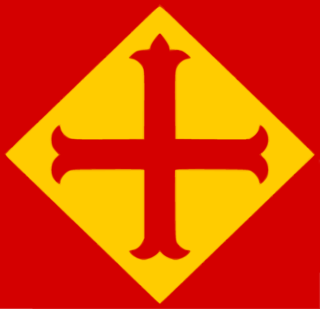
The Confederación Española de Derechas Autónomas, was a Spanish political party in the Second Spanish Republic. A Catholic conservative force, it was the political heir to Ángel Herrera Oria's Acción Popular and defined itself in terms of the 'affirmation and defence of the principles of Christian civilization,' translating this theoretical stand into a practical demand for the revision of the republican constitution. The CEDA saw itself as a defensive organisation, formed to protect religion, family, and property. José María Gil-Robles declared his intention to "give Spain a true unity, a new spirit, a totalitarian polity..." and went on to say "Democracy is not an end but a mean to achieve the conquest of the new state. When the time comes, either parliament submits or we will eliminate it." The CEDA held fascist-style rallies, called Gil-Robles "Jefe", the equivalent of Duce, and claimed that the CEDA might lead a "March on Madrid" to forcefully seize power.

The Movimiento Nacional was a governing institution of Spain established by General Francisco Franco during the Spanish Civil War in 1937. During Francoist rule in Spain, it purported to be the only channel of participation in Spanish public life. It responded to a doctrine of corporatism in which only so-called "natural entities" could express themselves: families, municipalities and unions. It was abolished in 1977.
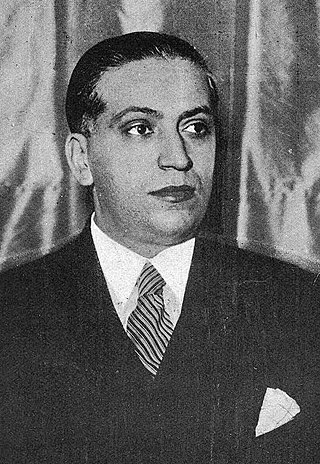
José Calvo Sotelo, 1st Duke of Calvo Sotelo, GE was a Spanish jurist and politician. He was the minister of finance during the dictatorship of Miguel Primo de Rivera and a leading figure during the Spanish Second Republic. During this period. he became an important part of Spanish Renovation, a monarchist movement. Calvo Sotelo's assassination in July 1936 by the bodyguard of PSOE party leader Indalecio Prieto was an immediate prelude to the triggering of the Spanish military coup of July 1936 that was plotted since February 1936, the partial failure of which marked the beginning of the Spanish Civil War.

Falangism was the political ideology of two political parties in Spain that were known as the Falange, namely first the Falange Española de las Juntas de Ofensiva Nacional Sindicalista and afterwards the Falange Española Tradicionalista y de las Juntas de Ofensiva Nacional Sindicalista. Falangism has a disputed relationship with fascism as some historians consider the Falange to be a fascist movement based on its fascist leanings during the early years, while others focus on its transformation into an authoritarian conservative political movement in Francoist Spain.

The Falange Española Tradicionalista y de las Juntas de Ofensiva Nacional Sindicalista, frequently shortened to just "FET", was the sole legal party of the Francoist regime in Spain. It was created by General Francisco Franco in 1937 as a merger of the fascist Falange Española de las JONS with the monarchist neo-absolutist and integralist Catholic Traditionalist Communion belonging to the Carlist movement. In addition to the resemblance of names, the party formally retained most of the platform of FE de las JONS and a similar inner structure. In force until April 1977, it was rebranded as the Movimiento Nacional in 1958.

Spanish Renovation was a Spanish monarchist political party active during the Second Spanish Republic that advocated the restoration of Alfonso XIII of Spain, as opposed to Carlism. Associated with the Acción Española think-tank, the party was led by Antonio Goicoechea and José Calvo Sotelo. In 1937, during the course of the Spanish Civil War, it formally disappeared after Francisco Franco's merger of the variety of far-right organizations in the rebel zone into a single party.

The Nationalist faction or Rebel faction was a major faction in the Spanish Civil War of 1936 to 1939. It was composed of a variety of right-leaning political groups that supported the Spanish Coup of July 1936 against the Second Spanish Republic and Republican faction and sought to depose Manuel Azaña, including the Falange, the CEDA, and two rival monarchist claimants: the Alfonsist Renovación Española and the Carlist Traditionalist Communion. In 1937, all the groups were merged into the FET y de las JONS. After the death of the faction's early leaders, General Francisco Franco, one of the members of the 1936 coup, headed the Nationalists throughout most of the war, and emerged as the dictator of Spain until his death in 1975.
Accidentalism and catastrophism were two differing ideologies in Spain in the inter-war period. They were particularly noticeable among opponents of Spain's Second Republic (1931–1939) – most significantly of the liberal and socialist governments of 1931–1933 and 1936 until the start of the Spanish Civil War. The opposition press and groups tended to fall into one of the categories, which would both hold sway during the period of the Republic.

The National Council of the Movement, was an institution of the Franco dictatorship of a collegiate nature, which was subordinated to the Head of State. Originally created under the name of the National Council of FET and the JONS on 19 October 1937 in the midst of the Civil War, it would continue to exist until 1977, following the death of Francisco Franco and the dismantling of institutions of his regime.

Juan Víctor Pradera Larumbe (1872–1936) was a Spanish political theorist and a Carlist politician.
El Siglo Futuro was a Spanish Traditionalist/Integrist daily newspaper, published in Madrid between 1875 and 1936.

Tomás Domínguez Arévalo, 6th Count of Rodezno, 12th Marquis of San Martin (1882–1952) was a Spanish Carlist and Francoist politician. He is known mostly as the first Francoist Minister of Justice (1938–1939). He is also recognised for his key role in negotiating Carlist access to the coup of July 1936 and in emergence of carlo-francoism, the branch of Carlism which actively engaged in the Francoist regime.

Carloctavismo is a branch of Carlism, particularly active in the 1943–1953 period. In terms of dynastical allegiances it advanced the claim to the Spanish throne of Carlos Pio de Habsburgo-Lorena y de Borbón, styled as Carlos VIII, and his relatives. In terms of political line it collaborated very closely with Francoism.

Maurism was a conservative political movement that bloomed in Spain from 1913 around the political figure of Antonio Maura after a schism in the Conservative Party between idóneos and mauristas ('maurists'). Its development took place in a period of crisis for the dynastic parties of the Spanish Restoration regime. The movement, which fragmented in several factions in the 1920s, has been portrayed as a precursor of the Spanish radical right.
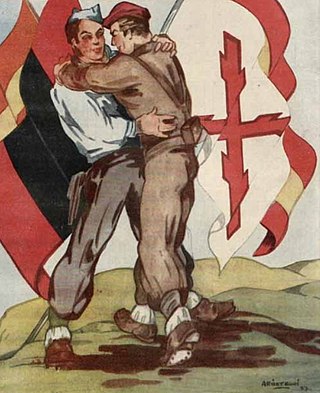
The Unification Decree was a political measure adopted by Francisco Franco in his capacity of Head of State of Nationalist Spain on April 19, 1937. The decree merged two existing political groupings, the Falangists and the Carlists, into a new party - the Falange Española Tradicionalista y de las Juntas de Ofensiva Nacional Sindicalista. As all other parties were declared dissolved at the same time, the FET became the only legal party in Nationalist Spain. It was defined in the decree as a link between state and society and was intended to form the basis for an eventual totalitarian regime. The head of state – Franco himself – was proclaimed party leader, to be assisted by the Junta Política and Consejo Nacional. A set of decrees which followed shortly after appointed members to the new executive.
The history of the far-right in Spain dates back to at least the 1800s and refers to any manifestation of far-right politics in Spain. Individuals and organizations associated with the far-right in Spain often employ reactionary traditionalism, religious fundamentalism, corporate Catholicism, and fascism in their ideological practice. In the case of Spain, according to historian Pedro Carlos González Cuevas, the predominance of Catholicism played an essential role in the suppression of external political innovations such as Social Darwinism, positivism, and vitalism in Spanish far-right politics.
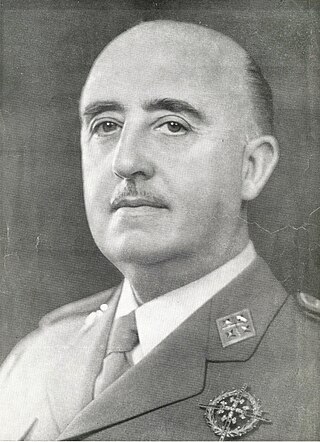
Carlo-francoism was a branch of Carlism which actively engaged in the regime of Francisco Franco. Though mainstream Carlism retained independent stand, many Carlist militants on their own assumed various roles in the Francoist system, e.g. as members of the FET y de las JONS executive, Cortes procuradores, or civil governors. The Traditionalist political faction of the Francoist regime issued from Carlism particularly held tight control over the Ministry of Justice. They have never formed an organized structure, their dynastical allegiances remained heterogeneous and their specific political objectives might have differed. Within the Francoist power strata, the carlo-francoists remained a minority faction that controlled some 5% of key posts; they failed to shape the regime and at best served as counter-balance to other groupings competing for power.

Pact of Territet was an attempt to mend the long-standing dynastic feud between two Spanish Borbón branches and their supporters, known as the Alfonsists and the Carlists. In September 1931 it was agreed between two competitive exiled claimants, posing as Alfonso XIII and Jaime III. The deal envisioned that a new Spanish constituent assembly would pronounce who should be the king, and both pretenders pledged to accept the verdict. It was also tacitly understood that the following king should be Juan de Borbón y Battenberg, descendant of the Alfonsist branch but supposed to embrace Carlist political principles. Following unexpected death of Jaime III the agreement was questioned by his Carlist successor, posing as Alfonso Carlos I; he demanded further declarations on part of the Alfonsists. As they failed to materialize, both branches stuck to their own principles and the deal was abandoned. In historiography there are doubts about details of the agreement, and some authors question its very existence.
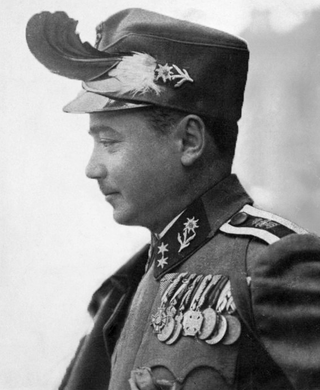
Para-fascism refers to authoritarian conservative movements and regimes that adopt characteristics associated with fascism such as personality cults, paramilitary organizations, symbols and rhetoric, but it diverges from conventional fascist tenets such as palingenetic ultranationalism, modernism, and populism. It often emerges in response to the need for a facade of popular support in an age of mass politics, without a genuine commitment to revolutionary nationalism, instead focusing on maintaining tradition, religion, and culture. Para-fascist regimes may co-opt or neutralize genuine fascist movements. Examples of para-fascism include the regimes and movements of Austrofascism in Austria, Metaxism in Greece, the “New State” of Salazars’ Portugal, and Francoism in Spain.
















